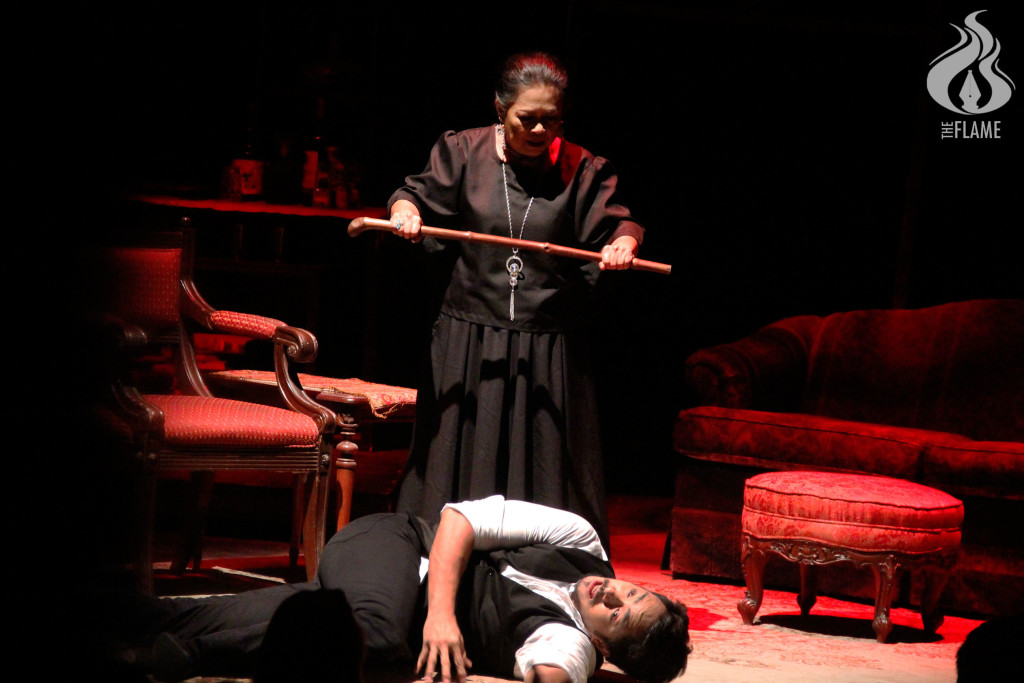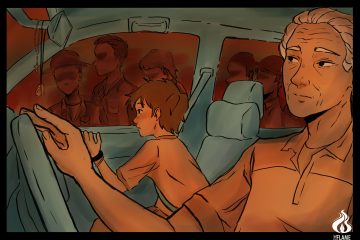
THE CONCEPT of “home” is always tied to a person’s identity, in which an individual feels a sense of belongingness. It is supposed to be a place of comfort, a primary refuge and a private space. However, when the abode itself denies comfort from the people living in it, it becomes a place of destruction than creation, burden than solace.
#14 Leandro Road, directed by Jay Crisostomo IV, is a Filipino play adaptation of Edgar Allan Poe’s short story, The Fall of the House of Usher. The play uncloaks the mysteries of a house that has long been haunted by the ghosts of the ancestors of the remaining Laperal siblings who live there. The house is based on the Victorian-style Laperal White House in #14 Leonard Wood Road in Baguio, which has been believed to be a site of paranormal activity for several decades.
The play has two versions—the all-female cast and the all-male one. Both versions incorporate LGBT theme and incest, in which twins Rudy/Pilar and Anton/Anna have romantic feelings for each other, as well as for Ed/Edna Ramos, their friends of the same gender who come to the Laperal mansion for a visit. Same-sex romance and incest become the root of paranormal disturbance in the mansion when the ghosts of the twins’ grandmother, Donya Victorina, and their mother, Consuelo, constantly invade their minds.
Magic realism is evident in the play due to the spirit-infested nature of the house, in which reality and the supernatural world mingle to form a concept of reality where spirits become a daily part of the characters’ lives. Horror manifests in the occasional spine-chilling lullaby of Consuelo’s ghost and the seemingly omnipotent power of Donya Victorina’s ghost to listen, whisper, observe and even control the bodies of the twins and their visitor, bringing them immediate physical pain. The house, therefore, becomes a character in itself in which it is able to grow senses from the unearthly forces that compel the characters to stay and become unable to leave.
The play succeeds in evoking horror through the ghost characters, the gradual fall into insanity of the twins and Ed/Edna, and Anton/Anna’s rise from the dead. When the terrific qualities are well-built, it is unavoidable for one to expect something in the end that is equally or even more horrifying and tempestuous. However, the fragmented storyline tends to become confusing. The spectacle has a mild and rather unsatisfying presentation of the macabre, especially during the fall of the house itself, with the lack of tumult in the precipitous shaking of the stage and the fall of the wooden windows.
Despite the discontenting sense of disorder, the play is commendable for debunking the notion of a shelter as a comfort zone. It becomes a place of entrapment and concealment that leads an individual to madness. The house, instead of being a mere space, not only shapes the identity of its dwellers but also creates its own identity as a manifestation of the workings of the real and the supernatural. F DIANNE ALYSSA A. AGUIRRE



